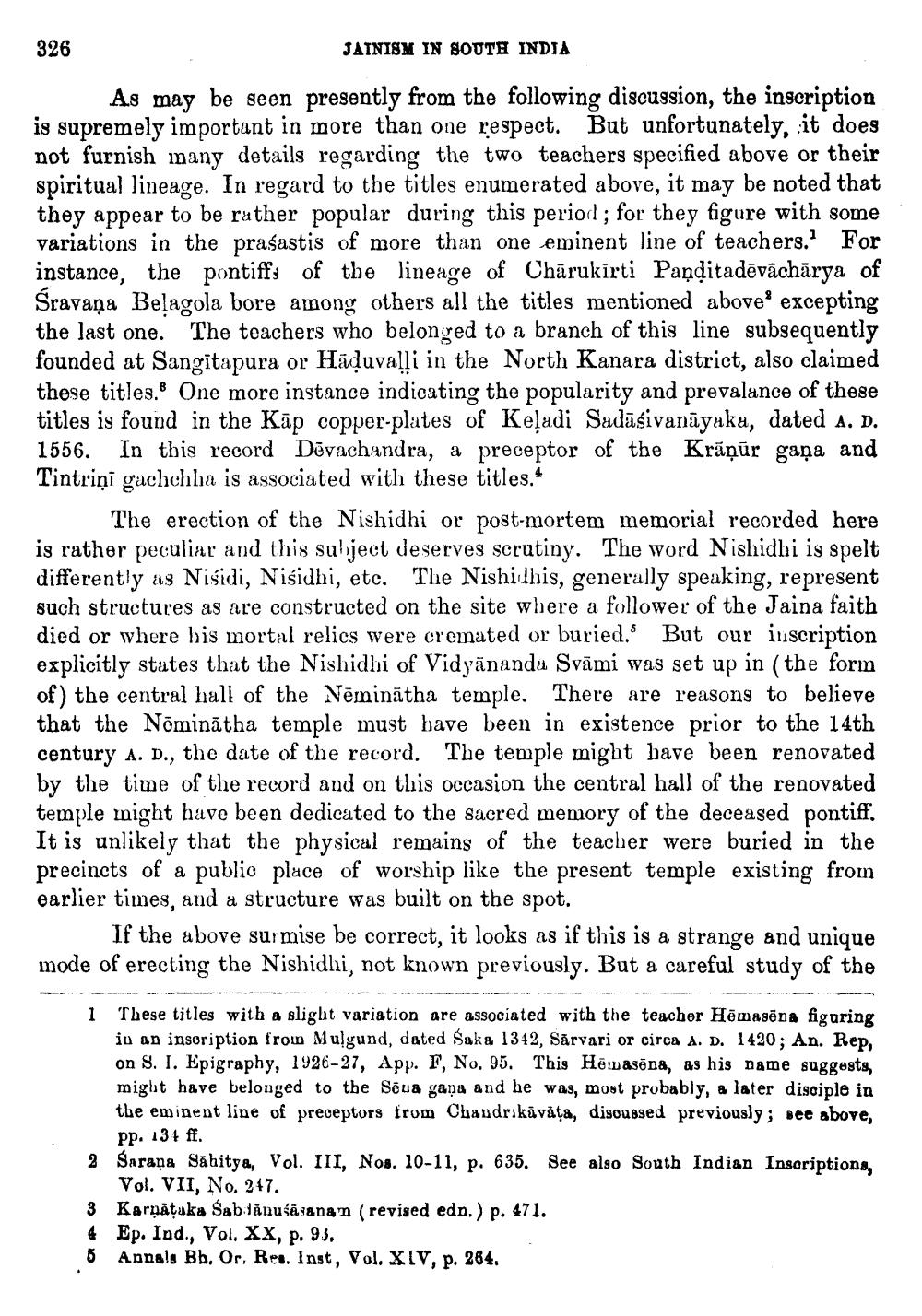________________
326
JAINISM IN SOUTH INDIA
As may be seen presently from the following discussion, the inscription is supremely important in more than one respect. But unfortunately, it does not furnish many details regarding the two teachers specified above or their spiritual lineage. In regard to the titles enumerated above, it may be noted that they appear to be rather popular during this period; for they figure with some variations in the prasastis of more than one eminent line of teachers. For instance, the pontiffs of the lineage of Chārukirti Paņditadēvāchārya of Śravana Belagola bore among others all the titles mentioned above excepting the last one. The teachers who belonged to a branch of this line subsequently founded at Sangitapura or Hāduvalli in the North Kanara district, also claimed these titles. One more instance indicating the popularity and prevalance of these titles is found in the Kāp copper-plates of Keladi Sadāśivanāyaka, dated A. D. 1556. In this record Dēvachandra, a preceptor of the Krāņār gana and Tintriņi gachchha is associated with these titles.*
The erection of the Nishidhi or post-mortem memorial recorded here is rather peculiar and this subject deserves scrutiny. The word Nishidhi is spelt differently as Nisidi, Nisidhi, etc. The Nishi dhis, generally speaking, represent such structures as are constructed on the site where a follower of the Jaina faith died or where his mortal relics were cremated or buried. But our inscription explicitly states that the Nishidhi of Vidyānanda Svāmi was set up in (the form of) the central hall of the Nēminātha temple. There are reasons to believe that the Nominātha temple must have been in existence prior to the 14th century A. D., the date of the record. The temple might have been renovated by the time of the record and on this occasion the central hall of the renovated temple might have been dedicated to the sacred memory of the deceased pontiff. It is unlikely that the physical remains of the teacher were buried in the precincts of a public place of worship like the present temple existing from earlier times, and a structure was built on the spot.
If the above surmise be correct, it looks as if this is a strange and unique mode of erecting the Nishidhi, not known previously. But a careful study of the
1 These titles with a slight variation are associated with the teacher Hēmasēpa figuring
in an insoription from Mulgund, dated Saka 1342, Sārvari or circa A. D. 1420; An. Rep, on 8. I. Epigraphy, 1926-27, App. I, No. 95. This Hēnasēna, as his name suggests, might have belonged to the Sēua gana and he was, most probably, a later disciple in the eminent line of preceptors from Chaudrikāvăţa, disoussed previously; see above,
pp. 134 ff. 2 Sarana Sahitya, Vol. III, Nos. 10-11, p. 635. See also South Indian Inscriptions,
Vol. VII, No. 247. 3 Karnataka Sabănusasanan (revised edn.) p. 471. 4 Ep. Ind., Vol. XX, p. 93. 0 Annals Bb. Or. Res. Inst, Vol. XIV, p. 264.




